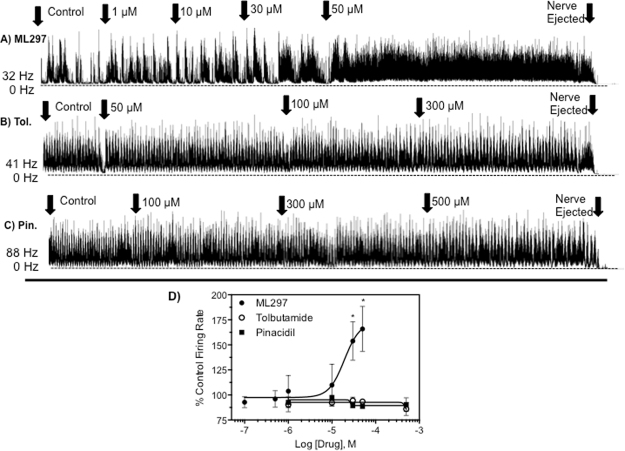Figure 6.
Neurophysiological recordings from the CNS of third instar larvae of D. melanogaster after exposure to pharmacological modulators of GIRK and KATP channels. Representative nerve discharge traces before and after exposure to (A) ML297, (B) tolbutamide, and (C) pinacidil. Initial CNS spike discharge frequencies in spikes/second (Hz) for each experiment are given to the left of each trace. The nerves were ejected from the electrode at the end of the recording to ensure the spike discharge frequency was not noise that had developed throughout the recording procedure. (D) Concentration response curve for ML297, tolbutamide, and pinacidil against CNS nerve discharge of D. melanogaster larvae from replicated recordings (n = 3–5 concentration per curve, with each concentration replicated at least 5 times), as shown in C. Data points represent mean percentage increase of baseline spike discharge rate, and error bars represent SEM of drug concentrations replicated at least 5 times. When error bars are absent, it is because they are smaller than the size of the symbol. Asterisks represent statistical significance with *representing P < 0.05 as determined by an unpaired t-test to the average baseline spike discharge frequency.

